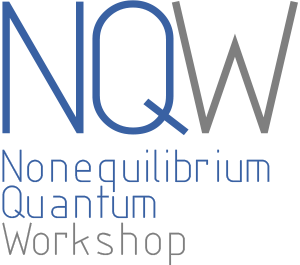
- This event has passed.
Transient Enhancement of the Ferroelectricity in the Rashba Semiconductor α-GeTe
December 14, 2021 @ 11:35 - 12:00 CET
G. Kremer,1 C.W. Nicholson,1 L. Nicolaï,2 J. Maklar,3 C. Silva,3 R. Ernstorfer,3 L. Rettig,3 J.H. Dil,4,5 J. Minár,2 G. Springholz,6 J. Krempaský,5 and C. Monney1
1Département de Physique and Fribourg Center for Nanomaterials, Université de Fribourg, CH-1700 Fribourg, Switzerland
2New Technologies-Research Center University of West Bohemia, Plzen, Czech Republic
3Fritz Haber Institute of the Max Planck Society, Faradayweg 4-6, 14195 Berlin, Germany
4Institute of Physics, École Polytechnique Fédérale de Lausanne, 1015 Lausanne, Switzerland
5Photon Science Division, Paul Scherrer Institut, 5232 Villigen PSI, Switzerland
6Institut für Halbleiter-und Festkörperphysik, Johannes Kepler Universität, A-4040 Linz, Austria
α-GeTe(111) is a bulk ferroelectric Rashba semiconductor which exhibits the largest known Rashba-type spin splitting of so-far known materials, one of the most promising mechanism to reversibly manipulate spin polarization. Its electronic structure in the occupied states has been intensively studied by Angle Resolved Photoemission Spectroscopy (ARPES) and Spin ARPES (SARPES) [1], the key technique to understand the spin texture of materials. Using operando SARPES, it has been demonstrated that it is possible to reversibly manipulate spin polarization by an external electric field in α-GeTe(111) [2] ; a promising behavior for spintronics applications. A stimulating direction of research is to investigate whether it is possible to coherently modify the ferroelectric properties of GeTe upon photoexcitation.
Using a 800 nm photoexcitation, we drive α-GeTe(111) out-of-equilibrium and probe its transient low-energy electronic structure with time-resolved ARPES. We reveal that the Rashba splitting of its bulk states is enhanced after 200 fs. By comparison with density functional theory calculations, we show that this change of the electronic structure is driven by a shift of the Ge atomic layer towards the Te atomic layer, meaning an increase of the ferroelectric distortion. A coherent phonon oscillation linked to this ferroelectric distortion is also observed, with a frequency consistent with the amplitude mode of the related polar mode.
We identify a surface photovoltage effect as the mechanism responsible for this transient enhancement of the ferroelectricity at the surface of GeTe and link it to a delayed displacive excitation of the coherent phonon of the ferroelectric distortion.
- J. Krempaský, S. Muff, F. Bisti, M. Fanciulli, H. Volfová, A.P. Weber, N. Pilet, P. Warnicke, H. Ebert, J. Braun, F. Bertran, V.V. Volobuev, J. Minár, G. Springholz, J.H. Dil, and V.N. Strocov, Nat. Commun. 7, 13071 (2016).
- J. Krempaský, S. Muff, J. Minár, N. Pilet, M. Fanciulli, A.P. Weber, E.B. Guedes, M. Caputo, E. Müller, V.V. Volobuev, M. Gmitra, C.A.F. Vaz, V. Scagnoli, G. Springholz, and J.H. Dil, Phys. Rev. X 8, 021067 (2018).


